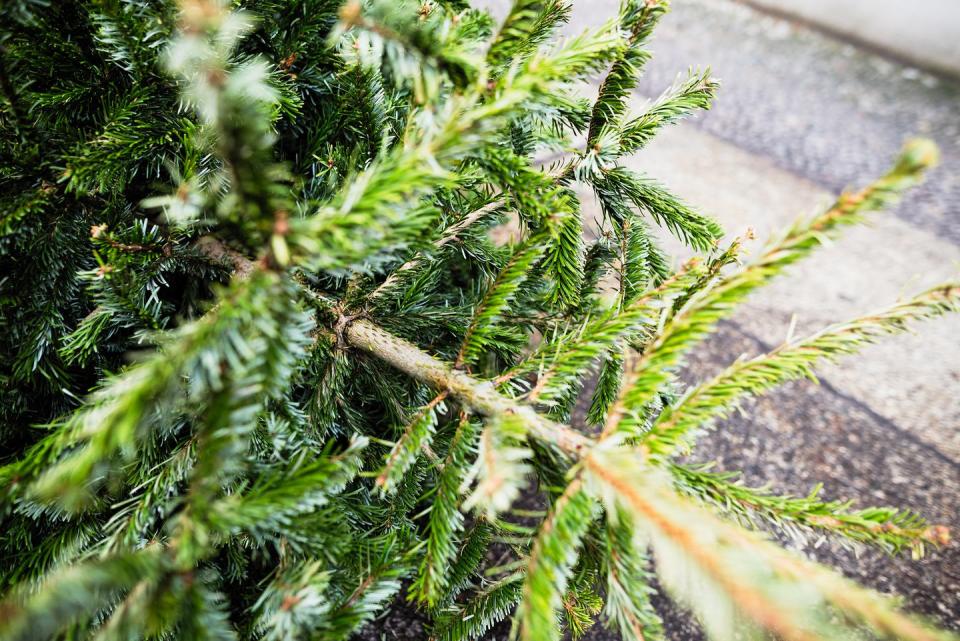The two common dates when you traditionally take down your Christmas tree

When should you take your Christmas tree down? Once Christmas Day and Twixmas passes, attention often turns to tidying the house and packing up the tree, including decorationssuch as wreaths, lights and garlands. There's often confusion – and debate – about the right time to do this. But you shouldn't be tempted to take your Christmas decorations down too quickly because tradition stipulates that it should stay up for a little longer than you might think.
Twelfth Night
Christian tradition dating back to the 4th century marks Twelfth Night, the end of Christmas and the Eve of the Epiphany (Christian feast day), as the time to take down your Christmas tree and pack up your decorations.
That means you can enjoy the twinkling lights for a little while longer, because Twelfth Night falls on either 5th or 6th January 2024 – and the dates depend on tradition. Be warned though: leaving your Christmas decorations up after this date is thought to bring bad luck.
After Advent, which is best described as the period of four weeks before Christmas in preparation and celebration of the birth of Jesus, Christmas celebrations traditionally started on Christmas Day and lasted for 12 days (known as the 12 Days of Christmas), finishing on the evening of 5th January, known as Twelfth Night.
The Epiphany on 6th January is a celebration in itself, marking the Magi – the Three Kings or Wise Men – visiting baby Jesus in his manger in Bethlehem, with their gifts of gold, frankincense and myrrh.
The Church of England celebrates Twelfth Night on 5th January, and the season of Epiphany from 6th January to 2nd February. However, some mark 6th January as Twelfth Night, counting the 12 days after Christmas Day, which is where the confusion stems from.
'Twelfth Night is the night before Epiphany and is the night, tradition says, when Christmas decorations should be taken down,' a Church of England spokesperson told The Telegraph. 'Epiphany, on the other hand, is the day when the Church, theologically, marks the arrival of the wise men to give their gifts to the baby Jesus: the day when some will add the wise men to their nativity scenes.'

New Year's Eve
There is another, perhaps lesser-known, tradition that in fact states that you should take your Christmas tree down on New Year's Eve (31st December) before midnight. For the superstitious types, it is thought you may have bad luck in the New Year if you keep your tree up longer than this period.
Roman Catholics
However, Roman Catholic families can choose to keep their tree up until 2nd February, according to the traditions of Candlemas, which commemorates the presentation of Jesus at the Temple.

What to do with your real Christmas tree
While there are many traditions, whenever you decide to take down your Christmas tree, don't forget to do your bit for the environment. If you have a real Christmas tree, remember that it can be recycled for composting and wood chipping – the chippings can then be used locally in parks or woodland areas.
Some councils will collect Christmas trees with normal garden waste, while others will have designated collections or special drop-off points. Visit your local authority's website for further guidance. You'll also find that many garden centres are happy to take old trees too. And, if you have a potted Christmas tree, remember you can plant it in the garden to give it life beyond the festive season.
Meanwhile, if you have rented a real Christmas tree this year, ensure you organise with your tree supplier when your tree will be collected.

How to store your artificial Christmas tree
Separately, if you have an artificial Christmas tree, take a more eco-friendly approach and reduce waste by storing it and reusing it each year. According to the Carbon Trust, an artificial Christmas tree needs to be used for 10 Christmases for it to have a lower carbon footprint than a real one.
Storage is important too. Invest in a durable tree bag or box and keep your tree in a cool, dry place, plus you should store the tree with a container of baking soda or unused coffee grounds to prevent any frowsy smells, according to the tree experts at Balsam Hill. Read more Christmas storage tips here.
Follow House Beautiful on TikTok and Instagram.
You Might Also Like

 Yahoo Finance
Yahoo Finance 
